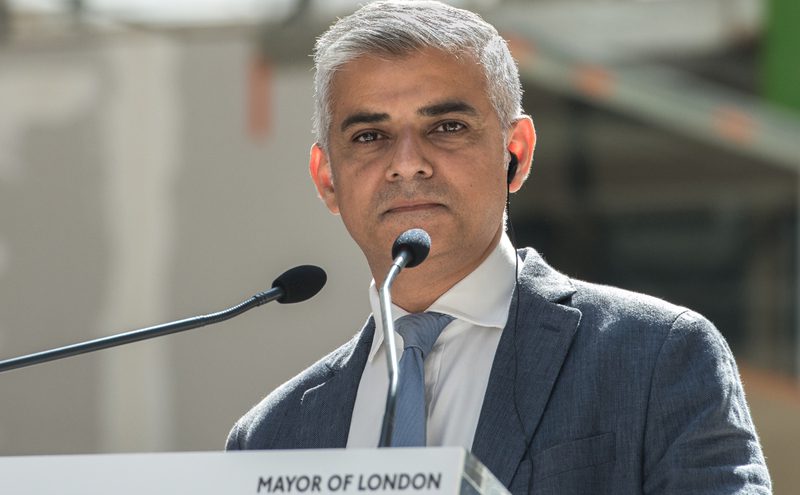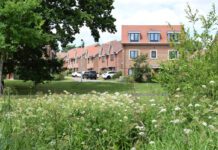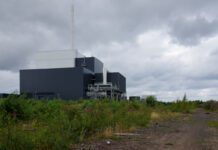
The Mayor of London Sadiq Khan has launched plans intended to re-shape the city as “the world’s first National Park City and one of the greenest cities on earth”, it was announced on 11 August.
As part of this ambition, the Mayor has said he will use planning regulations to protect the green belt and incorporate into new developments more ‘green roofs’ (roofs covered with grass and plants for soaking up rainwater), green walls (which can be added to the outside walls of buildings by busy polluted roads and are covered in plants to help boost air quality), ‘rain gardens’ (small green spaces which help prevent flooding), and habitats for wildlife.
He will also fund thousands more trees and improvements to community green spaces, and help London’s boroughs invest in its parks.
As an apparent first step to making this happen, the Mayor has announced a new £9 million Greener City Fund for London to create and improve green spaces. Local groups can apply for the first £1m of grants to plant neighbourhood trees and maintain green community areas.
The Mayor made the announcement as he launched his draft Environment Strategy for consultation at Woodberry Wetlands in Hackney, alongside the London Wildlife Trust.
The strategy outlines Khan’s putative vision of making the city a greener, cleaner and healthier place by targeting London’s toxic air, and with the aim of making London a zero-carbon city by 2050 with energy efficient buildings, clean transport and energy and increasing recycling.
All this is intended to boost London’s fight against climate change and help safeguard the health and wellbeing of Londoners.
Khan said: “London is home to outstanding green spaces that I want to protect, invest in and improve as we aim to become the world’s first National Park City.
“We can also increase the amount of greenery in the city by installing many more green roofs and making our streets greener. From our famous Royal Parks, to our much-loved community gardens and urban nature reserves like Woodberry Wetlands, this ‘green infrastructure’ is a vital asset that improves air quality, boosts quality of life, conserves wildlife and attracts thousands of visitors.
“I’ve set out my plans to improve London’s environment by fighting pollution, tackling waste and promoting cleaner energy so we can make London a healthier city that adapts to the impacts of climate change. I want to hear your views and ideas about how we can make London the greenest city in the world.”
As this is the first “National Park City”, a term which appears intended to borrow some of the aura and significance accorded to national parks, albeit without the corresponding legal teeth to enforce protection measures, the Mayor is working with partners across London, to set criteria for a National Park City, which will include:
· Protecting and increasing the amount of green space in the capital
· Increasing access to green spaces for Londoners of all ages, particularly in areas where there is currently a deficiency
· Increasing the quality of green spaces, ensuring they are well maintained and create healthy habitats for wildlife
· Valuing London green spaces, accounting for the health, environmental, social and economic benefits it brings to London.
The Mayor’s strategy proposals are designed to help London towards this goal and the aim of launching London as a National Park City at an international Summit in Spring 2019. His proposals include:
· Creating a ‘Challenge Map’ to highlight areas of London that should be priorities for green infrastructure investment as part of the Mayor’s target to make more than 50 per cent of London green by 2050
· Setting up a Green Spaces Commission to work with environmental experts to help boroughs attract investment, and transform and preserve their parks and green spaces
· Developing a new ‘Urban Greening Factor’ to ensure that green roofs, green walls – walls which are covered in plants and grass often by busy road sides and help lower pollution, trees and rain gardens are incorporated into new developments in London. The Mayor will also use his planning powers to protect our Green Belt and Metropolitan Open Land
· Targeting ‘grey’ areas to make them greener. With more Londoners living in flats and working in high rise offices, and with fewer people having access to private gardens, the Mayor wants to ensure more streets and public spaces become greener to improve health and encourage more walking and cycling.
Daniel Raven Ellison, National Park City campaigner said: “Making London a National Park City is an opportunity to improve the health of all Londoners. One of our main goals is to make the majority of London physically green and we very much looking forward to working with the Mayor on this target. The capital is famous for being a financial, cultural and political centre, but it’s an ecological centre too, with an incredible 14,000 species of wildlife, 3.8 million gardens and nearly as many trees as people. I look forward to working with the Mayor through the National Park City Foundation which is galvanising a movement to turn this big vision for London into a reality.”
In addition to the Mayor’s policies and programmes to green London, the draft London Environment Strategy includes:
· A comprehensive plan “to ensure Londoners can breathe the cleanest air possible”, including introducing the T-charge from October this year, plans to introduce an Ultra-Low Emission Zone (ULEZ) in 2019, and cleaning up the bus fleet. The new strategy also sets out the need for tougher pollution targets, as proposed by the World Health Organisation, to protect public health and starts to address the associated problem of indoor air quality.
· London’s first solar action plan which sets out the Mayor’s actions to more than double London’s solar energy generation capacity by 2030. Measures will include a new community energy grant scheme and a ‘reverse’ solar auction to help cut costs for Londoners who want to install solar panels on their homes.
· A new fuel poverty action plan to increase support for Londoners struggling to heat and power their homes affordably. This includes support through £10m energy efficiency delivery programmes, targeting the worst performing homes, as well as benefits uptake campaigns, referral services and programmes that provide direct advice and support to the fuel poor, and providing support to improve enforcement action against landlords who do not meet legal requirements.
· Policies to cut waste and encourage better use of resources, including setting minimum recycling standards to meet the Mayor’s target to recycle 65 per cent of London’s waste by 2030 and help cut food waste by 20 per cent per person by 2025
Mathew Frith, Director of Conservation, London Wildlife Trust, said: “The Mayor has made some welcome and challenging commitments to protecting London’s environment over the course of the next few years. We strongly support the development of his Environment Strategy, and hope its adopted policies and proposals will serve to make London a leader — once again — in developing innovative and rigorous approaches to urban greening. We look forward to continuing our work with the Greater London Authority to ensure that the city’s rich ecological assets are protected, and managed effectively, to ensure that the capital is a place where people can benefit from, and enjoy, the natural world around them. “
Responding to the announcement, AECOM’s Ben Smith, Director of Sustainable Development, commented: “AECOM is delighted that the Mayor has reaffirmed his commitment to make London a National Park City through the London Environment Strategy. The campaign to make London a National Park City has inspired us at AECOM to think about an improved built environment in London, incorporating more and better green infrastructure. We are big supporters of the campaigns aims. Our work cuts across a number of themes outlined in the strategy. We look forward to helping deliver on this vision for London.”






